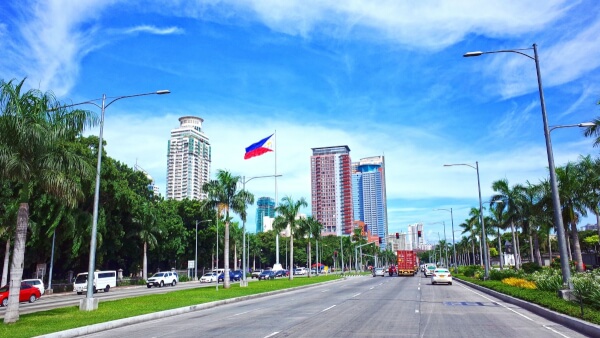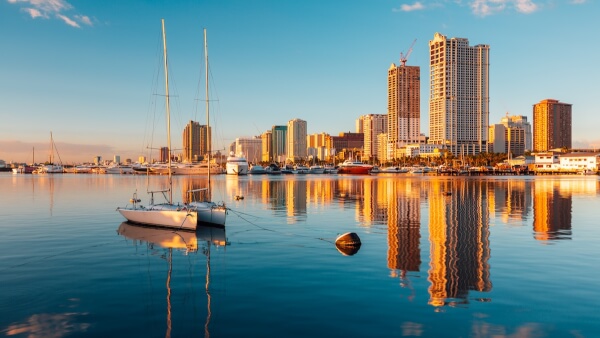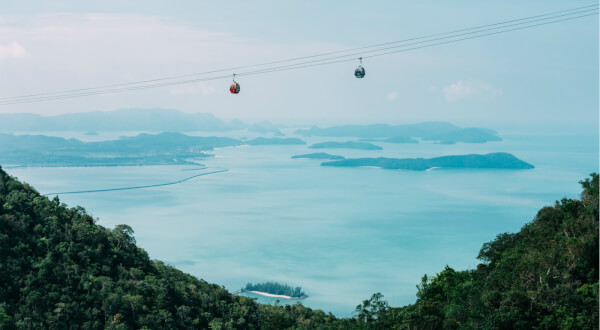Selling property in the Philippines: Taxes for Americans
What taxes do you need to pay when selling property in Philippines? Have a look at our guide to learn all about types, deadlines, and special considerations.

Spreading over 7000 islands, between the Pacific Ocean and the South China Sea, the Philippines is famous for its friendly community, tropical climate and stunning beaches. Throw in the extremely reasonable cost of living, and it’s no wonder the Philippines is a popular place for retirees.
Whether you're a Brit, an American or an Australian you might be considering setting up your home overseas to enjoy expatriate life in retirement. If you are looking for a new experience in a country where your money will go further, then it’s certainly worth considering the Philippines.
Here’s a complete guide to how to retire in the Philippines as an expatriate.
The official currency in the Philippines is the Philippine Peso. You’ll see it written using the currency symbol ₱, and the code PHP in exchange offices and online. One Peso is made up of 100 Centavos (the word Centavo might also appear written as sintabo or sentabo). Mostly, bank notes are used in the Philippines, although there are also smaller denomination coins in circulation.
Exchange rates rise and fall, so it’s worth keeping an eye on the market so you know what your money will be worth in the Philippines. You can always get the most up-to-date figures by using anonline currency converter, but at the moment, here are some general, rounded figures to give you a basic understanding:
Life in the Philippines is fairly cheap, but the costs do vary between areas. Imported and luxury goods can be found in the larger cities - which have malls and amenities like any large western cities might. However, they can be relatively expensive. Despite this, if you live a little more like a local, get to know your local vendors, and avoid places where you might be charged extra as a ‘tourist’, you can attain a very high quality of life for a relatively low cost.
The data site, Numbeo, provides averagecost of living data which can give valuable insight into the prices of everyday essentials, entertainment and travel in different locations.
| Regular goods | Average price in the Philippines (USD)* |
|---|---|
| Three course meal for two at mid-range restaurant | $14.13 |
| One litre of milk | $1.53 |
| Loaf of white bread | $1.02 |
| Bottle of wine (mid-range) | $6.06 |
| Petrol (One litre) | $0.82 |
| City centre apartment rental (One bedroom) | $239.48 |
| City centre apartment rental (Three bedroom) | $464.04 |
*These calculations are from Numbeo, which aggregates cost of living figures entered by locals. They’re an average across the country. Therefore, the actual costs will vary by region and city.
It’s definitely a good idea to do your research, and take into account all the costs connected with retiring in the Philippines.
One expensive pitfall for many expats is the high fees levied for international money transfers. If you need to regularly move money from a bank account at home to your bank account in the Philippines, then it’s good to know that your home bank might not be the cheapest option for this service. Often, banks apply high charges for international money transfers you may not be aware of - the fees might be hidden in poor exchange rates. A much better bet is a specialist service likeWise, where you can move your money from one country to the other using the real exchange rate, and with a low fixed fee - leaving you with more money to enjoy your retirement.
The cost of living in the Philippines varies enormously based on the type of lifestyle you lead, and where you choose to live. However, it's certainly possible to retire cheaply in the Philippines, without feeling at all deprived. International Living Magazine estimates that you could fund a modest retirement in the Philippines with just $760 a month, including rent. This assumes that you’ll live, eat and shop like a local. If your aim is to retire on a limited budget, then looking to live somewhere slightly outside of the centre of town, or in one of the lesser known resorts, will mean you can get more for your money.
On the other hand, if you’re moving to retire in a more luxurious setting, then you can live an extremely comfortable life for a relatively low cost. If you want a lifestyle of golf and country clubs, with restaurant meals and some help at home thrown in, it’ll still not break the bank. Something in the region of $1140 a month should be enough to afford some of the finer things in life during your retirement in the Philippines.
One of the main drivers of your living expenses will be rent. The costs of renting a property vary enormously depending on where you chose to live. Of course, you might prefer to buy a property in the Philippines, which could bring down your daily expenses significantly. If this is your preference, then check out the rules carefully, as foreigners can only own property under strict conditions in the Philippines.
You can estimate thecost of living in the Philippines, based on the city and lifestyle you're interested in.
The Philippines is a large country with a varied geography, leading to huge differences in the temperatures and climate in the regions. There are four different climate patterns depending on where you are in the country. These can be characterised as tropical rainforest, tropical savanna, tropical monsoon and humid subtropical. The temperatures are always pretty hot, although some highland areas get some reprieve from the tropical humidity at times.
There are also strong monsoons in some parts of the country, so it’s worth doing your research before choosing an area to live in. Manila, for example, has dry periods from January through April, when the weather can be very pleasant, with the rainy season kicking in during May.
| City in the Philippines | Average Lowest Temp | Average Highest Temp |
|---|---|---|
| Manila | 26°C (78°F) | 30°C (85°F) |
| Cebu | 27°C (81°F) | 30°C (85°F) |
| Baguio | 18°C (64°F) | 21°C (70°F) |
| Davao | 24°C (75°F) | 25°C (77°F) |
One major advantage of life in the Philippines is that English is very widely spoken. This makes it very easy to get by day by day, but also to find new friends and acquaintances. There are large expat communities in the cities and popular beach areas, which include a high proportion of retirees, meaning you can always find other seniors to join in activities and explore with. It’s good to know that there's an especially high number of US military retirees in the Philippines, and this leads to active expat communities. There are also voluntary organisations run by and for ex military personnel in the Philippines, many of which open their activities to non-military folk as well. Check out what’s on offer in your local area, online.
Expat retirees in the Philippines are welcomed by the government and local community. You can expect to find a notoriously friendly community, and have the support of the authorities as you settle into your new life.
The Philippines is a large and varied country. The capital, Manila, is a truly global city, with a huge expatriate community. It’s popular because of the choice of amenities like theatres and malls, but also the good quality of private medical care available. However, life in Manila is relatively expensive, and heavy traffic means the environment isn’t always great. An alternative is to live somewhere outside of Manila but in an easy travel distance so if you want - or need - to get to the capital quickly, you can. Laguna and Cavite are popular choices, with strong transport links, good property on offer and facilities such as golf and country clubs.
If you’re considering Manila as a retirement destination, it’s also good to know that there are areas of the city which struggle with levels of crime. On average, crime in Manila is moderate to high, as in many large cities, and you should exercise caution. You can compare thecrime rates in Manila with those of your hometown online.
Other choices for expats, which balance an attractive lifestyle and minimise the potential safety concerns of the large cities, include the highland city of Baguio, known as the ‘City of Pines’. Here crime levels are low, and the climate more moderate than in Manila. However, Baguio is some six hour drive from Manila, which might be problematic if you need to visit regularly.
ThePhilippines offers a special retirement visa for anyone who meets certain requirements. This means that if you’re a Brit, an American or Australian citizen looking to retire in the Philippines this might be the right visa choice for you.
To be eligible you must be over must be over 35 years old, and pay a fixed deposit amount to the authorities in exchange for your visa. This deposit amount is then returned when the visa is cancelled. You’ll need to hand over between $10,000 and $50,000 usually, although the exact amount depends on your age, and whether or not you have a pension coming in once you move to the Philippines.
You also need to pay admin fees to get your visa, and may be subject to a small annual fee which entitles you tosome ongoing support. This might be used to help you access government services or find the right medical care, for example. The full details are available on the dedicated government website, and you can alsoapply online and upload the documents needed to support your application.
The opportunity of retirement in the Philippines attracts people from all over the globe. Whether you’re looking to spend time in the busy city, or by the beach, you’ll be welcomed by a community of expats who have already made the leap.
Good luck, and enjoy planning your dream retirement in the Philippines.
*Please see terms of use and product availability for your region or visit Wise fees and pricing for the most up to date pricing and fee information.
This publication is provided for general information purposes and does not constitute legal, tax or other professional advice from Wise Payments Limited or its subsidiaries and its affiliates, and it is not intended as a substitute for obtaining advice from a financial advisor or any other professional.
We make no representations, warranties or guarantees, whether expressed or implied, that the content in the publication is accurate, complete or up to date.

What taxes do you need to pay when selling property in Philippines? Have a look at our guide to learn all about types, deadlines, and special considerations.

Everything you need to know about international schools in Manila, Philippines.

Want to learn about property taxes in the Philippines? This guide covers types of property taxes and how they are calculated to help you navigate the process.

In this article, discover essential guidance for moving to the Philippines from the USA. Navigate visas, logistics, and cultural adjustments seamlessly.

To get you started, here’s a beginners guide to the laws concerning dual citizenship in the Philippines.

When you’re expecting a newborn, life can be both wonderful and stressful at the same time. This is especially true if you’re on leave as a foreigner or...